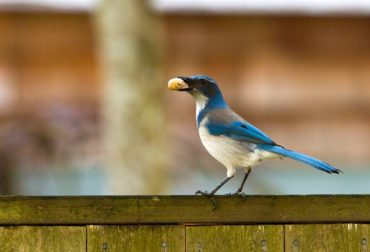
Two bird-related events make September one of the most exciting and interesting months for bird watching. Bird population numbers are the highest they will be for an entire year due to all of the young birds raised this year.
The other reason for the month’s excitement is that migrating bird numbers reach their peak in September and October. Fall migration begins as early as July. Birds that nested in the far north begin moving south down the West Coast. By early November, most migrating birds will have reached the end of their journey.
Birds are habitat-specific during the nesting season and throughout winter. They seek out the type of habitat suited to their needs, i.e. food, water, shelter and protective cover. However, during migration, other factors influence their movements. Weather is a major one. It is often responsible for pushing birds off course.
Inexperience is another reason some migrating birds visit areas they would normally avoid. Young birds experiencing their first migration travels can get lost. They aren’t familiar with the migration route. If they become separated from other migrants of their species, they often take up with other migrating birds and follow them.
Western scrub-jays nest in small numbers throughout Puget Sound, including the Kitsap Peninsula. However, during the fall, jays that nested farther north also move into this region and can account for some of the fall surprises that take place this month. Their movements are sporadic and difficult to predict. They may appear in neighborhoods that never, or rarely ever, see them.
The northern tip of the Kitsap Peninsula is a major stopping point for migrants that must cross the waters between Canada and Washington’s mainland. Pressure systems and the winds they create affect the birds’ travel route on this migration path. Western scrub-jays are frequently seen from Hansville to Poulsbo and communities all along this southward journey. They are northern visitors just passing through.
Migrating songbirds travel at night and often show up at feeding stations in the early hours. Others can arrive at a destination in late evening with the intention of spending the night. Some appear in broad daylight, spend a short time in an area and move on.
Waterfowl and other large birds often travel in flocks. They follow routes used for decades, even centuries, if the region hasn’t been significantly changed. Hood Canal is one of these routes. Interesting and unusual sightings in the vicinity of this body of water aren’t unusual.
Turkey vultures funnel in good numbers along or not far from the canal. Favorable winds can create “kettles” of vultures traveling southward. The birds ride these upward moving thermals that allow groups (kettles) of them to drift southward over or near Port Gamble, Silverdale, Bremerton, Port Orchard and Gig Harbor.
Fall migration is underway, in a big way, and September surprises are happening throughout the West Sound region.



























Comments